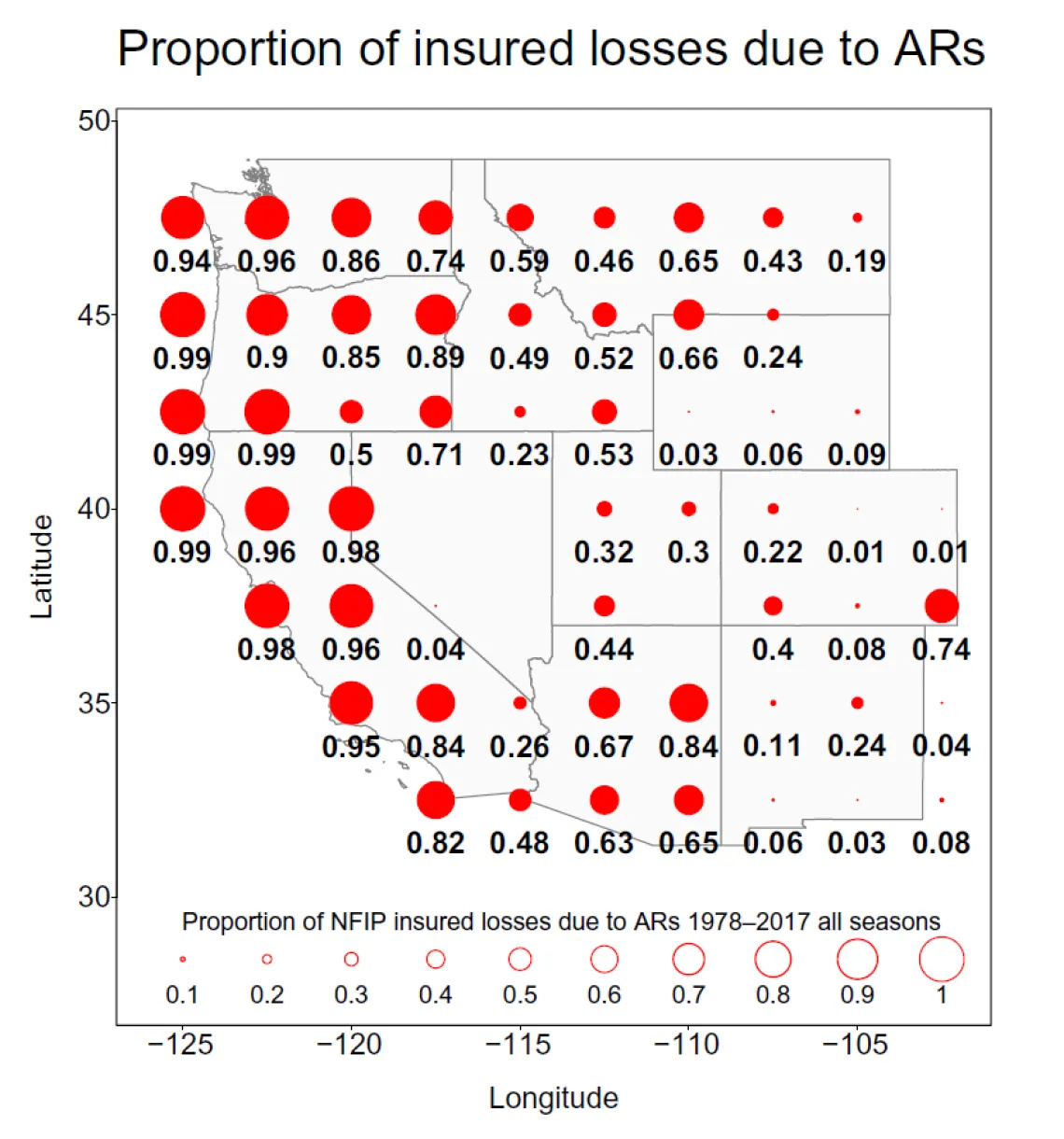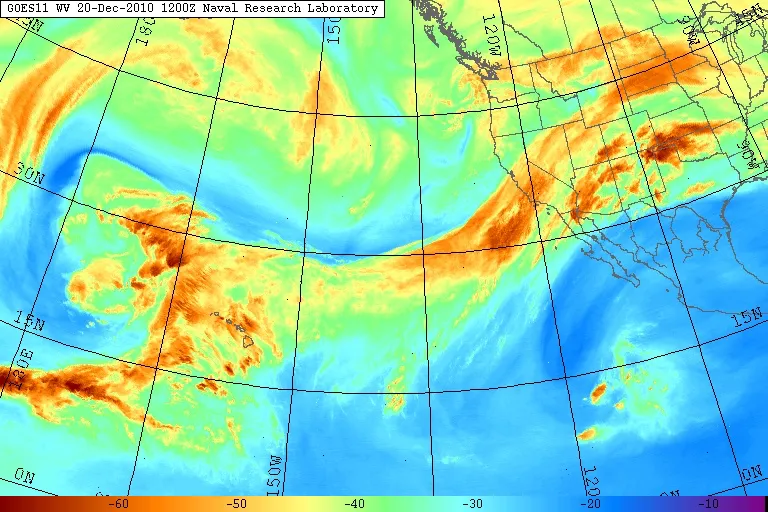Atmospheric Rivers Cause Billions of Dollars in Flood Damage in the Western U.S.

Figure caption: "From 1978 to 2017, ARs accounted for 84.2% of all insured flood losses in the 11 western states across all seasons." National Flood Insurance Program (NFIP)
From 1978-2018, 84% of the flood damage in the western U.S. was associated with atmospheric rivers, costing the region almost $42.6 billion, according to authors of a new study published in Science Advances. Atmospheric rivers (ARs) are long narrow bands of moisture in the air carrying high volumes of water vapor.
The Pacific coastal states experience the most ARs, and in some areas these events accounted for 99% of flood-related damages. However, inland states can also face significant flood damages from ARs. As they go over mountains, ARs release rain and snow, and coastal mountain ranges block the precipitation from reaching inland states. However, gaps in these mountain ranges allow precipitation through, resulting in limited AR related flood impacts.
ARs are not a new phenomenon, but because of a warming climate “we expect to see longer, wider, and wetter atmospheric rivers in the coming decades,” says Corringham, lead author of the study from Scripps Institution of Oceanography at UC San Diego. “The most important finding in the paper is that a small increase in the intensity of atmospheric rivers can lead to a large increase in damages.”
AR storms are categorized on a scale from 1-5. However, a Category 4 storm may not necessarily cause more damage than a Category 1 storm. Where the storm makes landfall, and existing environmental conditions, are also important factors. For example, if there had recently been a lot of rainfall in an area, then a Category 1 storm could cause a mudslide and damages similar to a Category 4 storm. But if the same area had not recently experienced a lot of rain, the ground would just soak up the rain and the damages wouldn’t be as severe.
Authors of the study suggest that restoring natural floodplains would help mitigate flood damage. Other suggestions include hardening flood control infrastructure, and government buy-back of property in high-risk areas. However, buying back property can be tricky, according to Dr. Corringham. He says that we need to come up with creative solutions for handling human displacement. For example, in the 9th Ward after Hurricane Katrina, families had been there for several generations and would lose their communities if they moved. He asked a man with a home in Alaska that was threatened by wildfires two years in a row, how much he would have to pay him to give up that home. The man responded that he built that home by hand so it wasn’t about the money. Corringham asks, would it be possible to move that house or to move communities in a way to preserve the structure of that community? These are difficult questions. Just paying someone the fair market value for their house is not enough. We need to come up with better solutions.

Atmospheric river over California, December 2010. Photo credit: U.S. Naval Research Laboratory.
Though these storms cause flooding, they also play a crucial role in providing California and the entirety of the western U.S. with vital water resources. Without ARs, our water resources would be much more limited than they are. In fact, a couple of strong events could bring the Southwest out of severe drought. “They are important to study in this region where they basically orchestrate the hydroclimate and water resources,” says Dr. Alexander Gershunov (Scripps Institution of Oceanography at UC San Diego), study co-author and investigator with the Southwest Climate Adaptation Science Center. “The challenge is capturing this runoff in reservoirs. If an atmospheric river is in the forecast, the reservoir managers have to release water to make room for the runoff. The reservoirs are designed to capture snow melt when it is manageable and melts gently in the spring and summer,” he says.
ARs not only have economic effects, but they also have effects on wildlife and the ecosystem. Runoff from AR storms pushes pollutants from the coast into the ocean, negatively impacting the water quality of coastal marine systems.
In addition to examining the costs of flood damage caused by ARs, researchers are looking into the landfall behavior of ARs to predict how the western U.S. may be impacted in the future. California in particular is predicted to be especially vulnerable to an increase in extreme precipitation events caused by ARs due to climate change. The authors call for more research on ARs and tools that can help predict the number, intensity, and duration of these storms. This information will be critical for mitigating damage from flooding and harvesting the water for future use.

